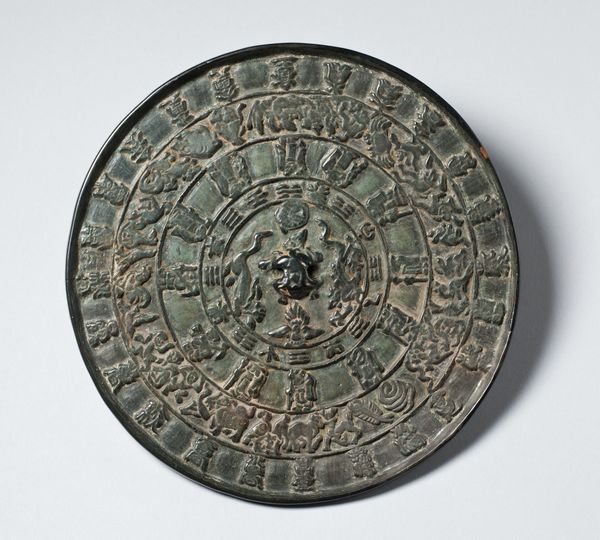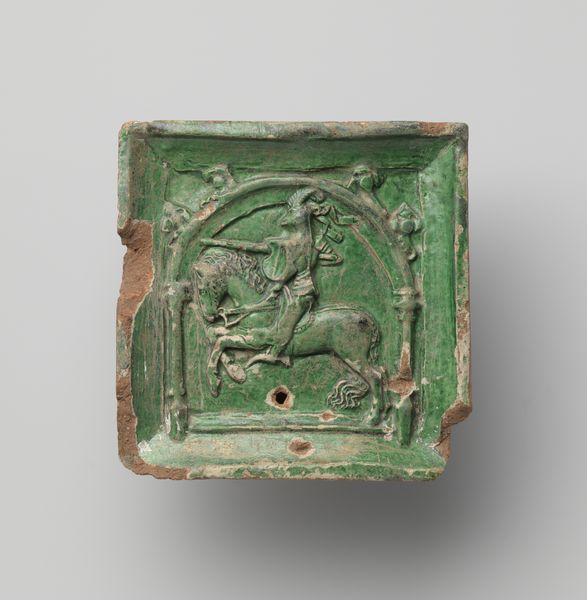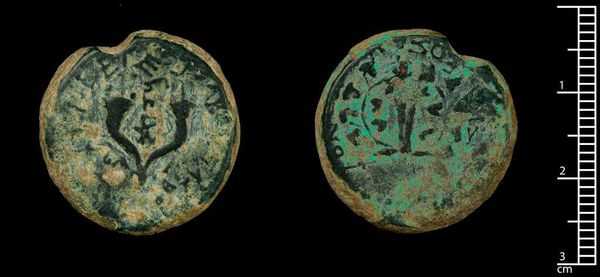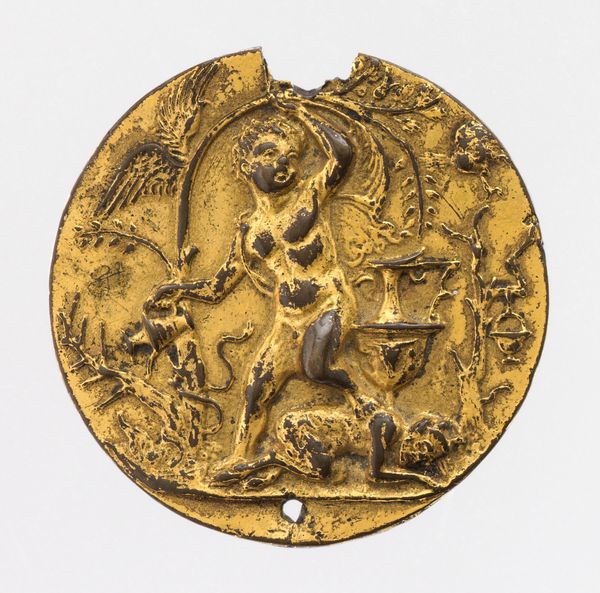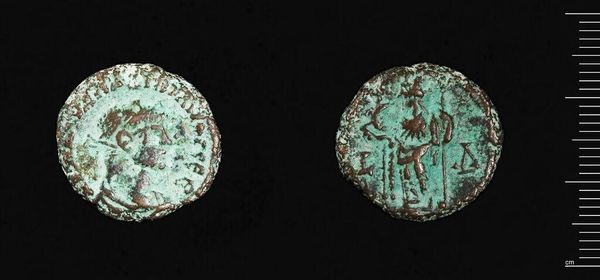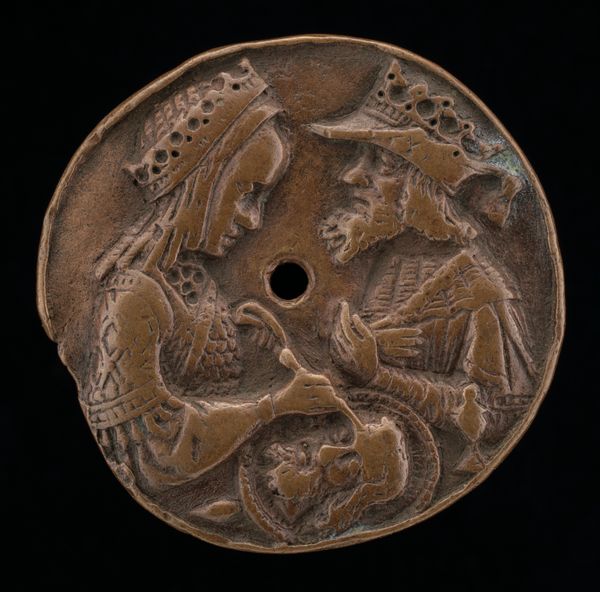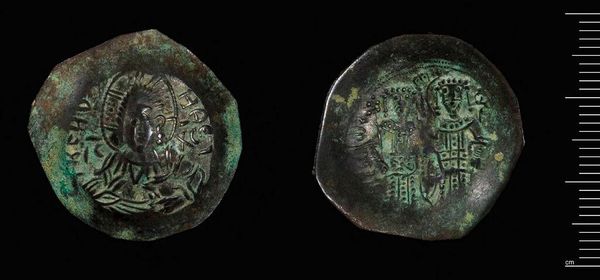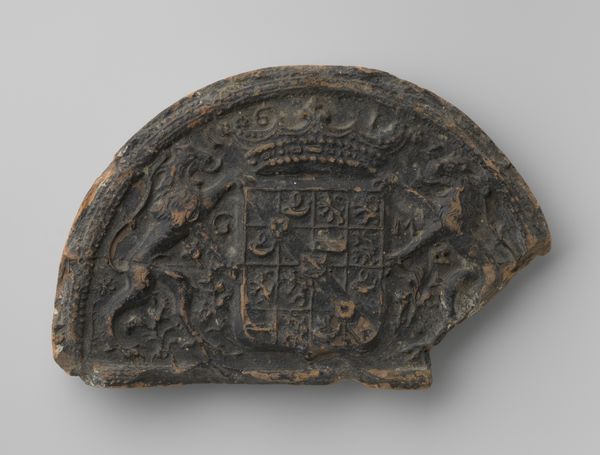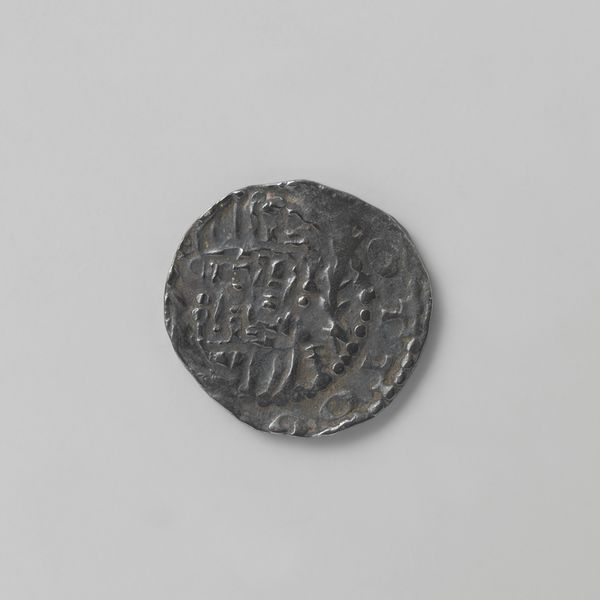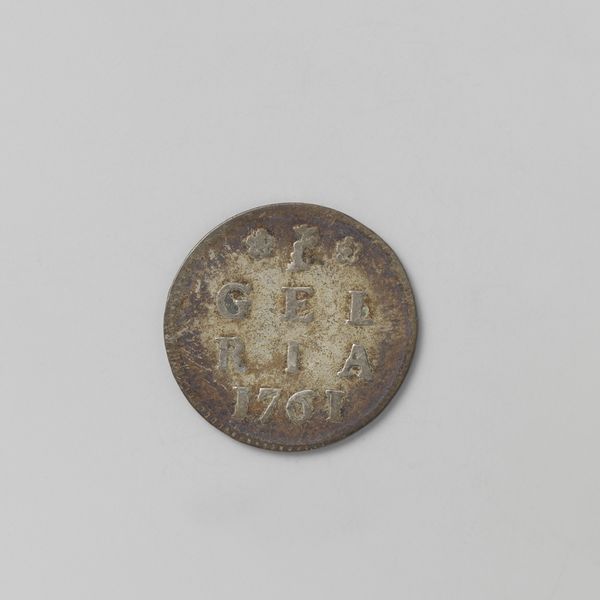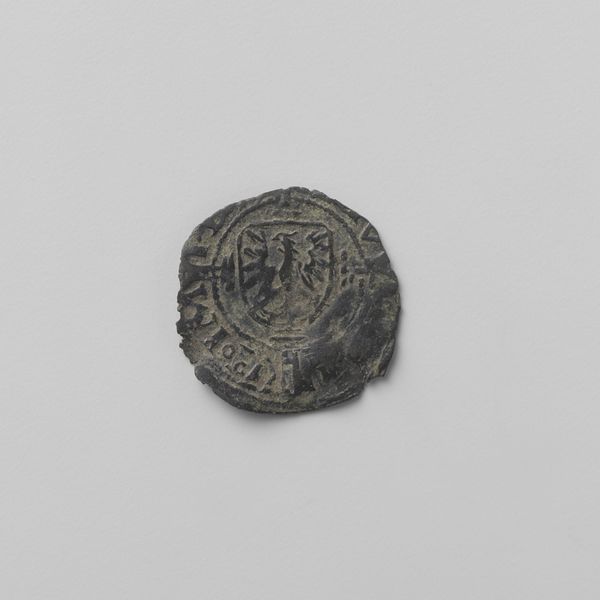
Mirror showing a ship at sea and inscription c. 12th century
0:00
0:00
relief, bronze
#
asian-art
#
relief
#
landscape
#
bronze
#
ancient-mediterranean
#
decorative-art
Dimensions: 1/2 × 6 11/16 × 6 11/16 in. (1.27 × 16.99 × 16.99 cm)
Copyright: Public Domain
Curator: Let’s explore this bronze mirror dating from approximately the 12th century. The Minneapolis Institute of Art calls it "Mirror showing a ship at sea and inscription." What's your first impression? Editor: It feels ancient and mystical. The patina immediately transports you, and the overall composition, a textured tableau etched onto a circular plane, evokes a sense of cyclical journeys. Curator: The relief carving is intriguing. Notice the interplay of forms—the meticulously rendered ship set against the abstract swirls representing the sea. It's a deliberate juxtaposition of realism and stylization. Editor: Precisely! Ships in Chinese art are loaded with symbolic freight: adventure, trade, exploration of the unknown. Here, the ship could signify aspirations for success or safe passage across life's tumultuous waters. The inscription probably adds another layer, potentially auspicious blessings or dedication. Curator: Indeed, that circularity reinforces concepts of time and destiny, with the ship acting as a metaphorical vehicle navigating both. Consider the bronze itself—a dense, reflective medium, traditionally associated with ritual and power in ancient Chinese culture. The tactile quality is crucial; it invites a kind of sensory engagement. Editor: That verdigris also creates depth; this oxidation process acts like a natural aging effect, amplifying the historical dimension. These aren't mere decorations. These vessels served as crucial bridges between cultures, conveying commodities, religions, and artistic forms throughout the world. It reminds us that the mirror image and symbol carried similar importance across varied cultural touch points. Curator: Very well. To step back, we see that this object deftly marries function with artistic expression, showcasing not only technical mastery, but a deep understanding of visual syntax. It invites contemplation on both personal reflection, offered by its reflective properties, and of broader cultural narratives. Editor: A remarkable convergence, the piece manages to resonate on levels both quotidian and eternal; providing us with an access point for decoding a culture's desires. Curator: An evocative portal. Editor: Yes, indeed.
Comments
minneapolisinstituteofart almost 2 years ago
⋮
Buddhism flourished in Korea during the Goryeo dynasty, and Buddhist themes and symbols came to embellish many artifacts. The overall shape of this mirror is based on a lotus blossom, a Buddhist symbol of purity. The scene probably depicts a spirit boat carrying the souls of the dead to the afterlife. Dragons cavort in a cosmic sea and one of them blows the boat along its way. The inscription provides a clue that the image is about transition from life to afterlife: “Clear, vast, luminous heaven.”
Join the conversation
Join millions of artists and users on Artera today and experience the ultimate creative platform.
